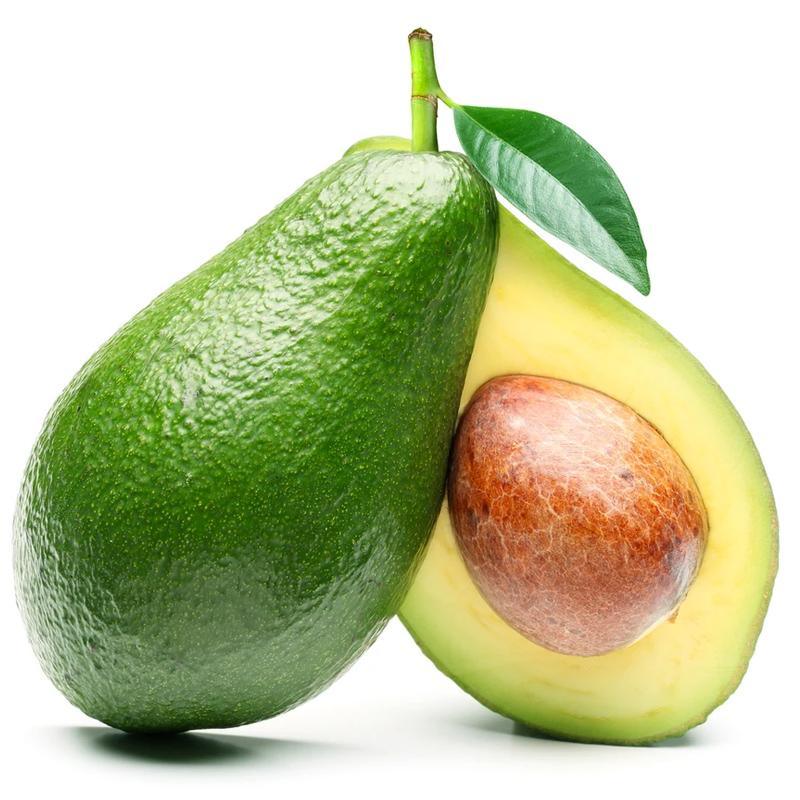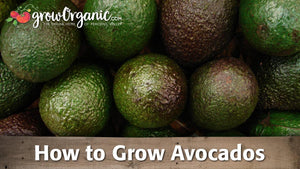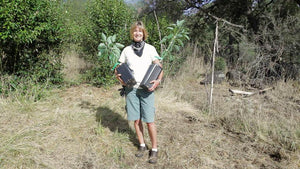Item Number: FT600
Bacon Avocado Tree (Potted)
Now Shipping Lower 48 States
Bacon Avocado Trees are a popular choice for avocado lovers, particularly those living in areas with lower winter temperatures. Known for their creamy, buttery flesh and mild flavor, Bacon Avocados are perfect for salads, slices, or spreading on toast. This guide will provide detailed information on growing and caring for Bacon Avocado Trees, ensuring you can enjoy their delicious fruit.
Due to hot summer temperatures, we have temporarily suspended tree shipments to the states of NM, TX, OK, NV and AZ. Shipping to these states will resume in the fall once temperatures subside to levels consistent with safe healthy tree shipment. Shipments to other states will require expedited shipping during the summer months. Thank you for your patience and understanding as we prioritize the protection of your order.
Characteristics of Bacon Avocado Trees:
- Fruit Characteristics: Medium-sized fruit (10–12 oz) with medium-thin green skin that's easy to peel.
- Flavor: Creamy, buttery flesh with a mild flavor ideal for versatile use.
- Ripening Period: Ripens from December to March for fresh winter avocados.
- Cold Hardiness: Tolerates temperatures down to 26 °F—ideal for cooler climates.
- Growth Habits: Medium upright growth; reaches up to 20 feet without pruning but height is easily managed.
- Rootstock: Grafted onto Mexican Seedling rootstock for vigor and disease resistance.
- Pollination: Type B avocado; plant a Type A (e.g., Hass, Pinkerton, or Reed) nearby for best yields.
Growing Bacon Avocado Trees:
- Location: Choose a sunny, well-drained spot with room for growth.
- Soil Preparation: Add compost for fertility and drainage; pH 6.0–7.0 is preferred.
- Planting: Dig a hole slightly larger than the root ball. Plant at nursery depth, backfill, and water thoroughly.
- Watering: Keep soil consistently moist during establishment; avoid letting it dry out.
- Fertilization: Use avocado-specific fertilizer and micronutrients like zinc and iron.
- Pruning: Maintain manageable size and airflow; pruning helps control tree height and improves harvest access.
- Pollination: Cross-pollinate with a nearby Type A avocado tree for better fruit set.
- Pest and Disease Management: Monitor for lace bugs, mites, and fungal issues; apply good sanitation and watering practices.
- Cold Protection: Use frost cloth or sprays during cold spells in frost-prone regions.
Tips for Successful Growing:
- Mulching: Helps retain moisture and control temperature. Keep mulch away from the trunk.
- Monitoring Soil Moisture: Use a soil meter and avoid overwatering.
- Wind Protection: Protect young trees using windbreaks or tree shelters.
- Supporting Branches: Use stakes for fruit-heavy branches to prevent breakage.
- Harvesting: Harvest between December and March. Let fruit ripen indoors—ripe fruit will yield to gentle pressure.
By following these guidelines for growing and caring for Bacon Avocado Trees, you can enjoy a bountiful harvest of delicious avocados. With proper attention to their needs, these trees will reward you with years of culinary delight and ornamental beauty. Happy gardening!
These trees, measured from the top of the root ball, are 18–36” tall, with a trunk diameter between 1/4–1/2 inch. The trees are 12–18 months old and should start bearing fruit in their 5th year. They are planted in a 5x12" growers pot. Within a month of delivery we suggest repotting into a larger (10"–12" diameter) container or planting directly in the ground.
For more information, please enjoy our Resource Guide for planting and growing avocado trees.
Visit our Fruit Tree Central for a listing of all our fruit tree videos and articles.
Visit Tree Characteristics for a listing of all our fruit & nut tree growing characteristics.
Orders are sent to the grower as soon as the purchase is made. All sales are final.
NOTE: Order by Thursday to ship the following Wednesday. Avocados cannot ship with other potted trees. *Avocados cannot ship during periods of very cold or very hot temperatures, therefore shipment of your trees will depend on the weather in your area. Avocado trees cannot be delayed to ship.
These are evergreen trees and thus the dormant bare root guarantee does not apply. Your trees will arrive in good, viable condition. Contact us immediately if they do not.


Check Your Zone Compatibility:
Compatible with your zone.
Growing Zone for

Our Guarantee To You
Since 1976, we've served our customers at every stage of growing. Please contact us at any time. We are happy to support and assist you.
Shipping Information
Shipping Information
Cannot ship to the following states: PR, VI, GU, NV, NM, OK
Cannot be picked up at our retail store.
Shipping Weight: 8.0 lb
Features
Features
- Potted
Characteristics
Characteristics
Planting & Care
Planting & Care
Soil: Well drained soil, sunny locations, and wind protection. If you have heavy clay soils, it is recommended to plant your avocado tree in a raised bed (should be at least 2 feet high). We recommend planting them at least l"-2" inches above the existing soil grade and then creating a small mound around the base with a mixture of compost and well drained soil.
Avocado trees are susceptible to root rot so you should not plant a new avocado tree in a space where an old tree had died as the soil may be contaminated.
It is a good idea to apply a 3 to 4 inch layer of mulch to avocado trees each year to help retain soil moisture and improve soil quality. Apply mulch in spring and fall under the canopy of the tree, keep it away from the trunk of the tree.
Water: Do not overwater avocado trees! Over watering trees in the ground in certain soils is often the number one factor in causing root rot. Avocados prefer infrequent deep root watering. It is best to allow trees to dry out before you apply water again. Avocados in containers do need consistent frequent watering.
Pruning: Avocados should only be minimally pruned in order to shape and control size. Frequent pinching of young trees is a good method to shape the tree, rather than heavy pruning. Avocado trees can be susceptible to sunburn so newly pruned trees and young trees can be whitewashed with interior white latex paint, diluted 50-50 with water during periods of high summer heat and intense sunshine.
Feeding: Avocado trees should be fed on a regular basis. Fertilize using well balanced citrus / avocado food using the manufacturer’s recommendations. Avocado trees that have been well feed year-round are better able to deal with cold temperatures in the winter.
Useful Information
Useful Information
Guarantee
Guarantee
We guarantee the perishable items we sell to be in good, viable condition when we sell them. Perishable items include, but are not limited to, garlic bulbs, flower bulbs, seed potatoes, onion sets & transplants, potted or bare root trees, vegetable crowns, etc. If your perishable item arrives in substandard condition, take photographs and please contact us within 3 days of the purchase date (or delivery date) and we will provide you with a refund of the purchase price (excluding shipping costs), or a replacement. Accordingly, we urge you to open any boxes marked as ""Perishable"" immediately upon receiving them and inspect the shipment thoroughly (do not crack open heads of garlic, we do not accept claims on cracked garlic). Because some perishable items can deteriorate very quickly, we cannot accept any claims beyond the 3-day time frame as it becomes too difficult to determine if these items were delivered in substandard condition, or if they turned into such substandard condition because of having been improperly cared for or stored once delivered.
Share





